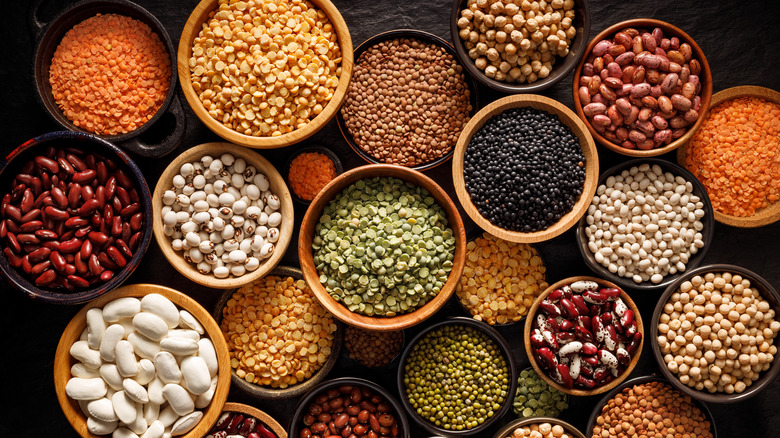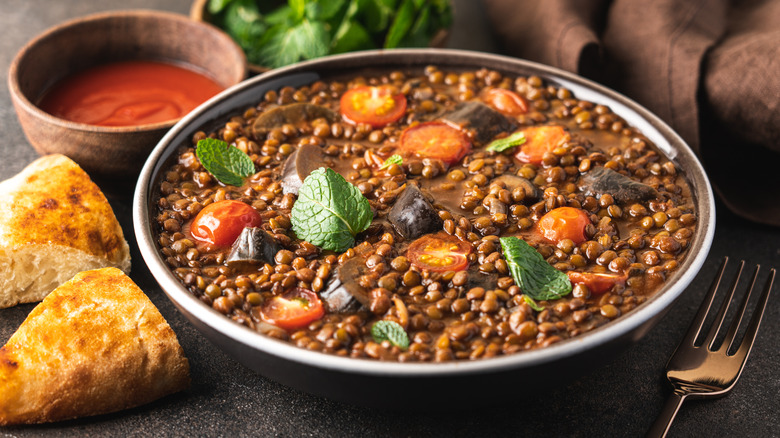The Reason It's Important To Properly Cook Legumes
Legumes — a class of vegetables that includes lentils, beans, and peas — are a versatile staple integral to diets worldwide. While these vegetables offer a cornucopia of nutrients, fiber, and protein, the benefits only outweigh the cons if you cook them properly. Raw legumes, especially kidney beans, contain high amounts of active lectins, which is an "anti-nutrient" and may cause immediate gastrointestinal reactions such as diarrhea, bloating, gas, and vomiting. There may even be a correlation between consuming high amounts of active lectin and food poisoning, according to MDPI.
This certainly isn't a reason to avoid legumes, though, because properly cooking them can inactivate lectins and unleash the full nutritional potential of these nourishing vegetables. Well-prepared and cooked legumes, like spiced lentils or kidney beans in a creamy kidney bean salad, are not only nutritious but delicious and very easy to make at home. So, let's dive into how we can quickly inactivate those troublesome lectins and safely enjoy legumes and their many health benefits.
Reduce lectins in legumes and reap the benefits
Several preparation methods can decrease or even inactivate lectins in legumes — such as soaking, boiling, or stewing. Lectins are hydrophilic, or water-soluble, and are typically located in the legumes' exterior. This makes rinsing and soaking a crucial first step in inactivating lectins in legumes like lentils, chickpeas, and dried beans. The second step in properly cooking these legumes is boiling or stewing them for several hours to cook away the active element in lectins (via Harvard University). This also makes the legumes' texture palatable and easier to eat and digest.
Not all legumes require extensive preparation and cooking; for example, green beans and snow peas can be eaten safely raw or "fresh off the vine" (via WebMD). However, there is still some debate surrounding this topic. Even though those kinds of legumes have fewer lectins, they are still present and not eating them raw is a great way to proactively avoid any potential irritants, according to Healthline. A suitable middle ground may be to wash and soak fresh green beans and snow peas or even flash-blanch them.
Continue to enjoy legumes and food containing lectins
There's really no need to avoid lectin-rich foods entirely. The health benefits legumes offer, such as potentially reducing the risk of cardiovascular disease and type 2 diabetes as well as the evidence they may help with healthy weight loss, seem to overshadow any harmful drawbacks of consuming lectins (via Harvard University). According to MedlinePlus, the carbs in legumes can help offer a steady stream of energy while the fiber and protein aid in suppressing appetite and healthy bowel movements.
With legumes being relatively inexpensive, they are easy to source in most grocery stores and supermarkets. On top of that, there is a plethora of easy legume recipes to explore, so embrace these nutrient-packed powerhouses and try a new legume dish at home. Just be sure to remember how vital it is to invest time in properly preparing and cooking legumes before consuming.


